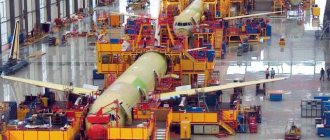If you want to learn everything about how work at height should be organized, you can look through a bunch of sites that contain a lot of useful information, but it is presented, as a rule, in purely legislative language.
Often these are just excerpts from articles, which complicates the understanding for novice occupational safety specialists and just people trying to understand all the intricacies and nuances of how the organization of work at height is structured.
Therefore, in this article I will try to explain in simple and accessible language what working at height is, about the requirements, giving examples from personal experience.
Thanks to the note, you will learn when it is strictly forbidden to carry out work, and what documents must be drawn up, and I will also attach completed samples of them.
If I don’t succeed, and you still have questions after reading, I invite you to sort them out in the comments. I will be happy to answer, and this communication will be useful not only to you, but also to subsequent readers.
Yes, by the way, don’t forget to read the comments, there we will discuss additional questions not included in the article ☺
- Order on the appointment of a person responsible for safe work at height
- List of works at height
- Work permit for work at height
- Work plan at height
- Instructions for using PPE
- Instructions for labor protection when working at height
Working at height and safety requirements
Working at height is a work activity during which an employee faces the risk of falling from a height of 1.8 meters.
You can familiarize yourself with all the signs that define work at height in paragraph 3 of Order of the Ministry of Labor 155n or simply look at them in the picture provided.
I would like to draw your attention to the fact that working at height is an activity in which there is a high risk of exposure to hazardous factors. And in order to avoid high rates of injury at work, it is necessary to implement many additional measures that will ensure greater safety for your workers.
And this is not only the development of documents, but also the implementation of measures to perform safe work at height, which will be discussed in this article.
Admission and non-admission
An employee working at height must obtain a special permit from the relevant services of the enterprise
. There are several reasons why a work permit is not issued:
- lack of a medical certificate confirming the results of the medical examination;
- lack of training before work;
- insufficient level of qualifications and experience;
- lack of personal protective equipment.
In order for an employee to begin work, measures
.
What are the requirements for workers when working at height?
You understand perfectly well that there are certain requirements for dangerous work that must be observed, otherwise there may be unpleasant situations - from a fine to criminal liability.
That is why employees who have reached the age of majority, who have passed a preliminary or periodic medical examination and, of course, training in both occupational safety and work at height, can be admitted to the relevant activities. And now about everything in more detail...
Medical examination for working at height
Moving step by step and implementing systems for the safe performance of work at height at the enterprise, the first thing you must do is to monitor the completion of medical examinations, as well as mandatory psychiatric examinations of employees and suspending them from work if there are contraindications.
The requirements in paragraph 1 of Appendix 2 of Order 302n for workers hired for such work are more stringent.
For example, a friend of mine was indignant when, during a preliminary medical examination, he received a restriction on working at heights. Yes, he started wearing glasses a couple of years ago and believes that they do not interfere with his work. But he was not given such an important mark in the “Pass” conclusion. Low vision and working at height are incompatible concepts.
The expected reaction of the company’s management followed – refusal to hire him in this position. They offered a vacancy where there was no work at height, but the salary was correspondingly lower. He refused. True, my friend still couldn’t understand why it’s impossible to work at heights wearing glasses?
We open clause 1 of Appendix No. 2, order No. 302n, and in the section “Additional medical contraindications” it is written in black and white: “Diseases of the visual organs: visual acuity without correction is below 0.5 in one eye and 0.2 in the other.” And as a result, the employer is obliged to suspend or not allow the employee to work in accordance with Article 76 of the Labor Code of the Russian Federation.
Contraindications must be confirmed by a medical report.
The employer must offer a transfer to another job that is not contraindicated for health reasons, and the employee must confirm his consent in writing.
It is important to note that if you nevertheless decide to admit an employee with medical contraindications, you may be held liable in the form of a fine of up to 130,000 rubles.
The principle of conducting various types of medical examinations and what to do if an employee has not passed the medical examination is described in this section >>. I recommend reading it if you have not done medical examinations yet.
And don’t forget about the mandatory psychiatric examination of workers who will perform work at height. You can only admit adequate ones ☺
Training to work at height
Before talking about how training to work at height should be done, you need to understand what these employees require. Because mistakes are often made at this stage, excluding one of the types of training.
So, according to clause 8 of Order of the Ministry of Labor of Russia No. 155n dated March 28, 2014, you can allow an employee to work after having previously trained him:
- labor protection requirements;
- safe methods and techniques for performing work at height.
If you can organize occupational safety training at the enterprise (there is also a note about this), then training in working at height should take place strictly in a training center that has the following package of documents (if they are not there, then the training will be considered invalid):
· license for educational activities; · teachers who are certified to conduct this training; · equipment for conducting practical classes.
Based on categories and responsibilities, work at height is divided into three groups. Please note that the frequency of training for work at height varies, this is important.
If your employee has not worked for more than a year, then he needs to undergo training at the training center again. But that’s not all, theory is good, but together with practical skills it’s better.
Therefore, before being allowed to work independently, based on the requirements of Resolution 1/29, the employee must undergo initial instruction, internship and knowledge testing. A person with at least one year of experience in working at heights can act as an internship mentor.
When is working at height prohibited?
The responsible person, the work manager, must make sure of the safety of his subordinates before giving orders to carry out work (clause 18 of Order of the Ministry of Labor No. 155n dated March 28, 2014), because there are a number of restrictions when work at height is strictly prohibited.
Any of the labor safety rules is written in blood, and if there is a restriction, it means that if this requirement is violated, an accident may occur.
Like, for example, working at heights with wind speeds of 15 m/s or more, the higher you are from the ground, the more unpredictable these weather conditions are and are perceived completely differently. The danger is due to the fact that there is a high risk of cables and other equipment getting tangled, increasing the risk of the worker swinging, and the moment is extremely unpredictable.
That is why it is worth studying the restrictions for working at height and under no circumstances allowing them to be violated.
List of basic documents for work at heights
If you are just building a system for safe work at heights and do not want to incur a fine from the labor inspectorate, you need to not only properly organize the training of workers, but also draw up all the documents in accordance with the requirements of Order No. 155.
To prepare for the inspection by the labor inspectorate, in addition to my article, you should use the GIT checklists, which you can download in this note >>. Please note that this note contains information about what administrative responsibilities an employer may have.
To organize work at height competently and safely, you must not only have all the necessary documents developed, but also put into action. That is, they should not just gather dust on a shelf awaiting the arrival of an inspector, protecting the employer from a fine, but actually work.
The documents are designed to prompt and focus the employee’s attention on how to carry out work safely. You must constantly monitor that the requirements of the developed “papers” are met, otherwise injuries will not escape.
So, I will present you with a list of necessary documents, and then I will analyze each in detail:
- Conducting medical examinations of employees, with the preparation of necessary documents.
- Information on employee training.
- Work order at height.
- The list of works approved by the order is excellent.
- Work plan at height and technological maps.
- Measures for evacuation and rescue of workers.
- Documents for recording the issuance of the permit.
To simplify the life of novice occupational safety specialists, and not only them, I suggest you use sample documents that you should have at your enterprise.
Order on the appointment of a person responsible for safe work at height
As in any area of labor protection, wherever you touch, an order is needed everywhere to appoint responsible persons. Height is no exception. Moreover, compared to other areas in occupational safety, it is necessary to take into account many more points. You need to focus on:
- responsible for safety;
- issuing a permit;
- drawing up PPR at a high level;
- inspection, maintenance of personal protective equipment, supervision of proper operation.
It’s easier to write all this in one order - it’s both more convenient and logical. You can download this order here.
The person responsible for the safe performance of work must not only be appointed by order, but also perform their functions in fact: it is mandatory to inspect PPE and the work site.
A situation may occur, as in one familiar enterprise, where the work manager, without making sure of the reliability and integrity of the boards and scaffolding used, allowed two employees to work at a height of 13 meters to insulate a process pipeline.
As a result, the boards on which the workers were standing broke. Fortunately, it was not a group fatal accident, but all thanks to the protective equipment. The workers suffered internal injuries and fractures, but the main thing is that they survived!
By the way, according to statistics, falling from a height is the most common cause of accidents in Russia compared to other possible injury situations. That is why the implementation of these works requires such careful preparation and responsible attitude.
List of works at height
It is necessary to develop a list of work at height in non-stationary places that will be performed at your enterprise.
Non-stationary workplaces are a geographically changing work area with constant movement in space (sub-clause “a” of clause 17 of the Rules). For example, this could be plastering facade walls, window cleaning, painting work, electrical installation work. refer to non-stationary workplaces.
Such a list is developed individually for your specifics and approved by the head of the organization.
It indicates dangerous work that must be performed only with a work permit, that is, under stricter control. This document is drawn up before the start of work.
Work permit for work at height
The Ministry of Labor has introduced an additional document when performing hazardous work, in order to provide more detailed instructions on the procedure for performing work at height:
- consistently set task;
- who should be involved among the employees;
- the person responsible for ensuring security is indicated.
All these points are prescribed in the work permit, and since the list needs to focus on hazardous work that requires the issuance of ND, it means that you need to understand what kind of work it is.
The rules for issuing a permit, its issuance and other questions that you may have have been discussed in detail in this article.
Work plan at height
A lot of activities should be carried out before starting work at height, because if you don’t formalize and organize everything correctly, extremely sad situations can arise, because there are cases when everything is done at random, and then unprepared and broken employees are taken away in an ambulance , enough. And here criminal liability already arises under Art. 143 of the Criminal Code of the Russian Federation.
The work plan at height must include all the requirements contained in Appendix 6 to the Labor Safety Rules when working at height. The PPR is approved by the person responsible for organizing their work.
You can download an approximate sample of PPR at height, a sample according to the new rules, by clicking on the link.
Instructions for using PPE
Workers must be provided with PPE for working at heights; not everything must be issued, but specifically for each type of hazard. You can see what to provide employees with in clause 110 of the Labor Safety Rules when working at height.
Under no circumstances should an employee be allowed to perform work without personal protective equipment. He must not only understand how to use it correctly, but also fasten it, hang it and place it in a certain position without the possibility of displacement when performing work.
In principle, the standard instructions are suitable, but you will have to modify them to suit the specifics of your enterprise.
Instructions for labor protection when working at height
Instructions for labor protection when working at height include basic labor protection requirements for employees working at height and are being developed to ensure their safety and health.
Typically, standard occupational safety instructions are used (most occupational safety specialists do this in their work), supplementing it with their own vision from the height of their experience.
In addition to the instructions, which are boring and uninteresting for employees to read, I offer a presentation for viewing. It can be used to complement orientation and annual training.
Security systems
Each enterprise must develop its own devices and mechanisms
, promoting the safety of high-altitude workers. These are various safety systems and other elements that prevent accidents at work and in the provision of services, and also increase the level of worker safety and labor productivity.
They are approved by the employer and higher authorities after passing a special check
.
There are several requirements
, which should definitely be taken into account before starting the work process.
- carefully inspect the place of work to be done and bring it into proper condition;
- inspect tools, fixtures and auxiliary equipment;
- prepare the necessary set of personal protective equipment, checking it in detail for reliability;
- take into account the general requirements related to the organization of workplaces, safety fences, compliance with technological openings, and ensuring a stable position;
- check stepladders for stability and take into account their optimal height, equipment with anti-slip devices, corrugated elements on the steps;
- make sure that there is sufficient lighting to perform certain tasks.
During the labor process
- all activities must be carried out on the basis of technological documentation and general rules for operating equipment;
- Care should be taken to avoid falling;
- be sure to provide protective barriers;
- The safety belt must be attached to places that are specially provided for this;
- if the work is carried out using attached stair structures, it is worth considering that in places of heavy traffic the elements must be protected, and if it is impossible to secure the structure, an employee must be placed at its base who will hold the system in a stable position;
- if a worker has to climb masts, he must be armed with a safety belt and attached with a sling to the general structure;
- if work is done on the roof, workers must acquire safety belts, the places for their fastening and operation are indicated by the work manager;
- It is not allowed for a large number of workers to accumulate in one place;
- lifting and lowering of loads is carried out using mechanical devices;
- transfer of plumbing and installation tools is carried out in bags, pouches, shoulder devices;
- During a break, all work parts must be removed or hidden.
- if accidents or situations that could lead to them occur during the work process, it is necessary to stop the process and take measures to eliminate or prevent the consequences;
- in the event of a fire, you should call the fire department and give information to the post, and then ensure that all emergency exits are opened, turn off the electrical power and close the window structures, starting to extinguish the fire with primary (available) means;
- if an accident occurs, it is necessary to ensure the organization of first aid for all injured employees and, if necessary, take them to the hospital, as well as take urgent measures related to preventing the development of accidents or other emergencies; the situation must be completely preserved before the investigation begins.











